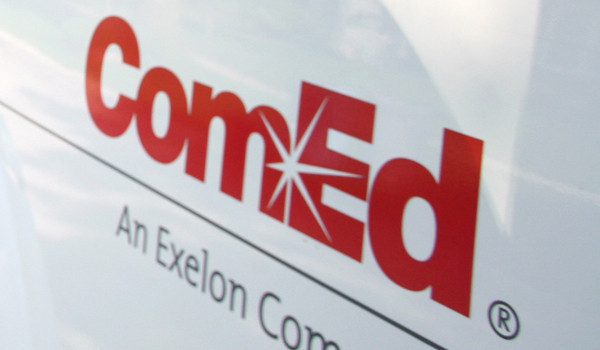Tag: Itasca

Powering Business Growth: ComEd’s Itasca Substation Expansion Update
Construction has progressed at ComEd’s Itasca Substation expansion project, which is part of a long-range plan to meet an anticipated need for more power in the western O’Hare region. ComEd crews have braved cold temperatures and winter weather to keep the project on-schedule. The Itasca substation expansion project will begin supporting economic development growth in a variety of sectors in Cook and DuPage Counties starting June 1, 2018.

ComEd Expands, Digitizes Itasca Substation to Meet Anticipated Regional Growth
Increased energy capacity to help power development of new data centers and western O’Hare construction
ComEd has broken ground on an expansion project at its Itasca Substation as part of a long-range plan to meet an anticipated need for more power in the region, in part due to expected growth in the construction and operation of data centers in the Elk Grove area as well as business in the western O’Hare market.
Features of ComEd’s newly expanded facility also will increase energy capacity within an approximate five-mile area—enough new capacity to ultimately serve the power equivalent of 80,000 residential homes. The new substation is designed with an “Intellegent Substation Dashboard,” which offers digital technology that makes it easier for ComEd to identify potential issues and respond quicker.
“ComEd actively supports economic development throughout northern Illinois, and substation projects, like the Itasca expansion, will help ensure the electrical infrastructure is in place to meet the region’s growth and future energy demand,” said Fidel Marquez, senior vice president of Governmental and External Affairs. “We look forward to working with prospective businesses like data centers and other operations who are interested in moving their companies into the area.”
“Elk Grove is one of the most desirable data center locations in the Chicagoland market and the new Elk Grove Technology Park provides additional sites for growth,” said Elk Grove Village Mayor Craig Johnson. “With ComEd’s electricity capacity expansion projects underway, existing and future businesses will have the confidence that power requirements can be met now and well into the future.”
“The western O’Hare market and projected growth of 65,000 new jobs by 2040 in the new Illinois tollway corridor is an important initiative for Choose DuPage,” said John Carpenter, Choose DuPage President & CEO. “We can now add ComEd’s substation expansion as one of the many reasons for businesses to grow in or move to DuPage County.”
ComEd has multiple existing substations serving customers in the area and goes through an annual short- (5-year) and long-range (10-year) planning process to assess expected load growth based on economic forecast modeling and actual customer usage.
Additional long-range capacity plans for the area call for construction of another new ComEd substation in north Elk Grove Village in the future.
ComEd’s grid modernization program, called Smart Grid, is almost complete and has contributed to record reliability for its customers over the last four years. Now the company is focused on implementation of the Future Energy Jobs Act (FEJA), ground-breaking legislation which will build off the Smart Grid foundation to help move Illinois to a clean energy future and provide greater access to renewables, energy efficiency and valuable job training within Illinois communities.
Tiny cars may solve big transportation problem
Tiny cars may help solve a very big problem in transportation. “The first mile/last mile challenge” is an issue that says you can only take a bus or train so far. But then how do you get to your final destination, when it’s not an easy walk away?
First Mile Last Mile Transit Solutions—Coming to a Suburb Near You!

Progressive communities are bucking a current trend by improving the reverse commute to attract large companies and talent to the suburbs. The missing link is the lack of connection between existing transit stations and key employment centers that are beyond walking distance—aptly named the “first mile last mile.” By bridging this gap with shared-use mobility, hundreds of thousands of workers can be connected to existing opportunities that were not previously viable. This gives companies much more flexibility when choosing the right location, and encourages their participation in determining the best first mile last mile solutions. Continue reading
Luxury rental development breaks ground adjacent to Hamilton Lakes Business Park in Itasca
When you think of luxury rental developments, what do you picture? Modern apartment towers rising from the busy downtowns of major cities, right? That doesn’t have to be the case. The suburbs might not get as much press when it comes to new multifamily projects, but plenty of developers are bringing high-end rental units to suburban communities across the Midwest.
American Academy of Pediatrics moving to new HQ in Itasca
The American Academy of Pediatrics is moving its headquarters from Elk Grove Village to a 183,000-square-foot building in Itasca being constructed by Opus Group.

